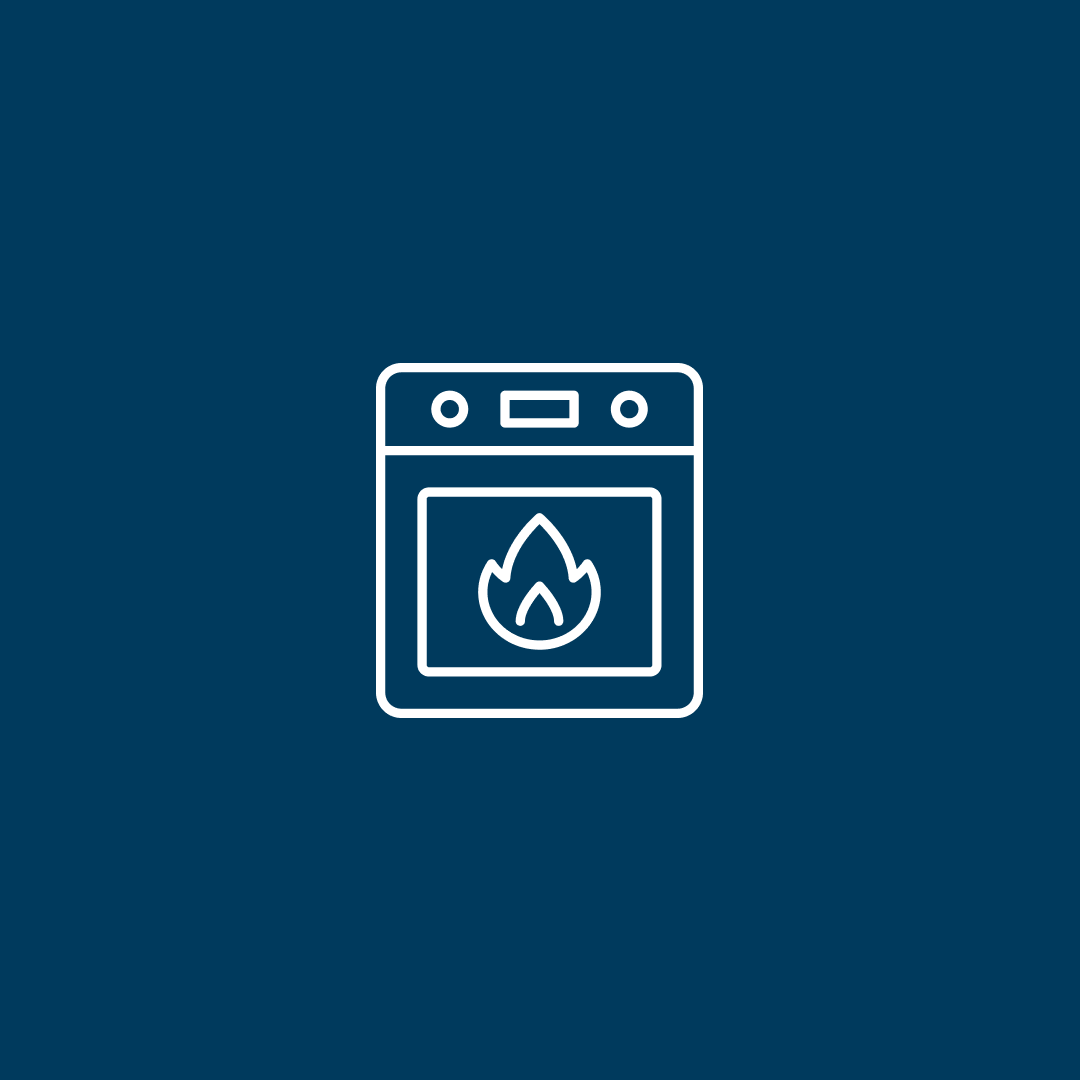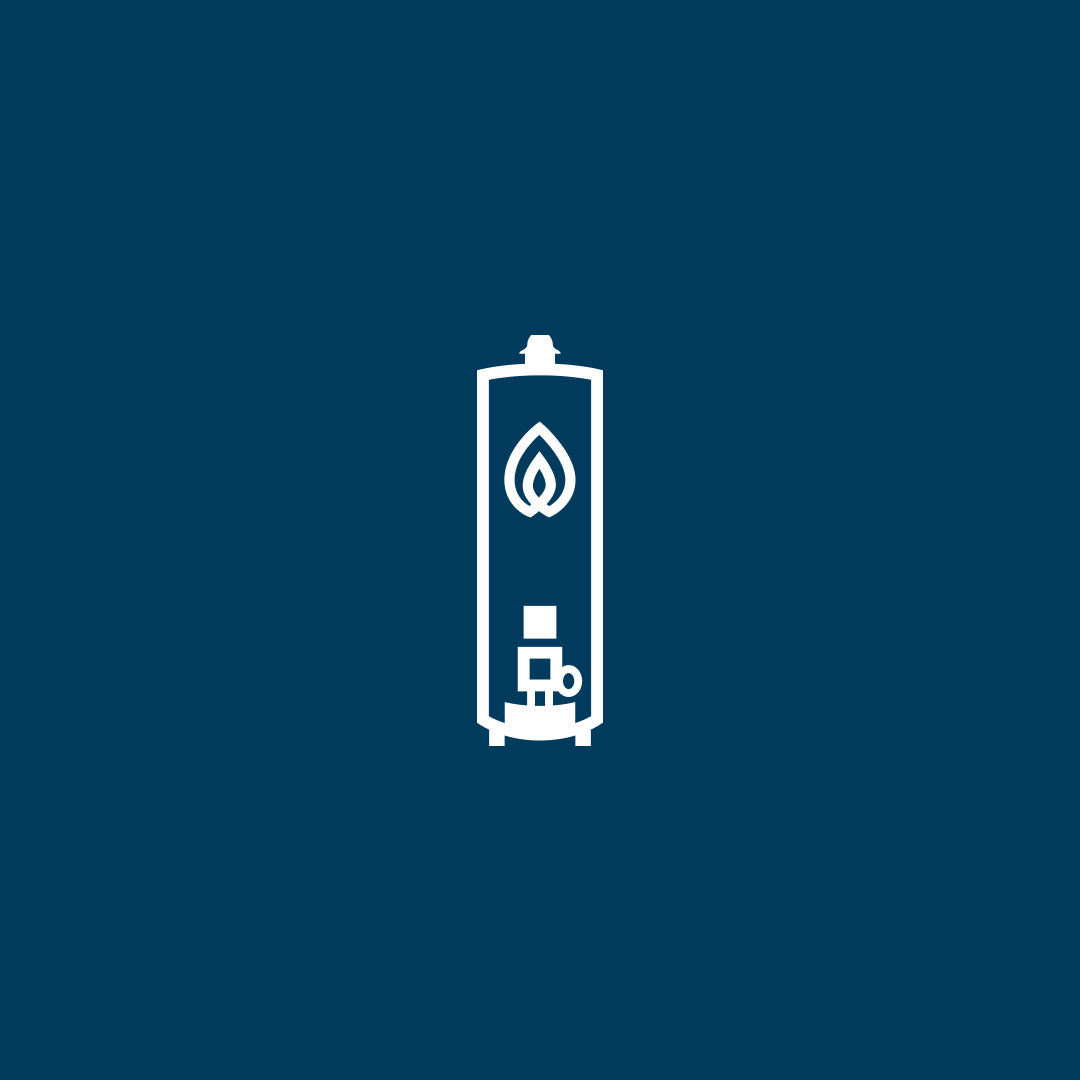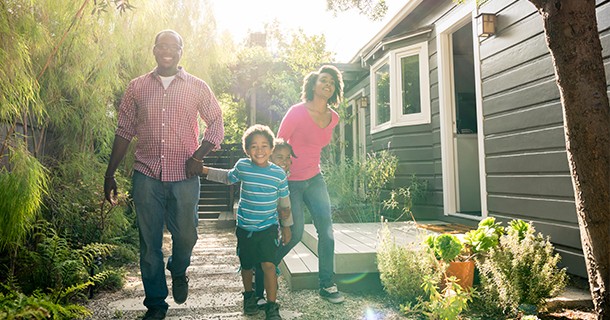Tips for Saving Money and Energy
The energy choices you make are important. They affect the environment, certainly. They also affect how comfortable you are in your own home. And very importantly, they affect how much money you spend. If you’re using natural gas today, you’ve already made a good choice for the environment, your home and your finances.
Tips for Efficient Water Heating
About Water Heaters
Natural gas water heaters can heat up to twice the amount of water in the same amount of time as an electric model—which means you’re less likely to run out of hot water when you need it. Natural gas water heaters are available in tank and tankless models. Both have significant advantages over electric and propane water heaters: With fewer parts to wear out, natural gas water heaters are generally considered more durable than electric models. If the power goes out, most gas water heaters continue to deliver plenty of hot water.
Water heating
- Set your water heater to 120 degrees
- Take 5-minute showers
- Install low-flow showerheads and faucets
- Insulate water heater pipes
- Turn your water heater off or down when you're away
- Choose an ENERGY STAR® water heater
Water Heaters and Furnaces
- Lower the temperature setting on your water heater to 120 degrees.
- Put an insulation wrap around the sides of your water heater. (But remember: Never put insulation on the top of the heater or near the bottom.)
Sinks and Showers
- Fix leaky faucets.
- Install low-flow showerheads and faucets
Washers and Dryers
A natural gas dryer can dry two loads of clothes in the same time it takes for one load in an electric dryer. This precision allows your dryer to keep pace with your washing machine. Less tumbling means that natural gas dryers are gentler on your clothes. Natural gas dryers dry clothes more quickly and with less static electricity and fewer wrinkles, than electric dryers.
- Use a water-level setting that matches the size of the load you’re washing.
- Select the proper setting and time for the clothing type and load size.
- In your dryer, separate heavier clothes (towels, heavy cottons) from the lightweight fabrics (synthetics) for more efficient drying.
- Dry full loads, but be sure not to overload your dryer.
- Clean the dryer’s lint filter before every load.
- Don't add wet clothes during the drying cycle.
- Don't over-dry clothes. Use the automatic moisture control if your dryer has one, or select the appropriate amount of time on the automatic timer.
- Be sure the outside dryer vent is free of any obstructions and the vent cover fully opens when the dryer is in use.
Clothes drying
- Clean the lint filter
- Replace leaky exhaust terminals
- Check the outside dryer exhaust terminal
- Avoid overloading the dryer
Heating Your Home
Furnaces
Natural gas furnaces heat your home faster. Air from a natural gas furnace is up to 25 degrees warmer when it comes through the vent than air from an electric heat pump. Most new high-efficiency furnaces have an Annual Fuel Utilization Efficiency (AFUE) rating of 90 percent or higher. The higher the AFUE, the more efficient the unit and the more money you can save.
Look for these high-tech features that improve furnace efficiency:
- Electronic spark ignitions or "hot surface" ignitions eliminate the need for continuously burning pilot lights that waste fuel and increase operating costs.
- Condensing furnaces recapture some of the heat from water vapor, which is wasted by traditional furnaces. The exhaust gases from a condensing furnace are cool enough that they can be vented through a wall with plastic piping.
- Pulse furnaces burn natural gas in small pulses, much like a car engine, allowing maximum heat to be extracted from the fuel. These furnaces can achieve AFUE ratings as high as 97 percent.
- Automatic vent dampers close the flue pipe when the burners are off and reduce the amount of heated air drawn up and wasted.
Gas Space Heaters
Energy-efficient gas space heaters are growing in popularity — and for good reason, they operate even during power outages. They’re also great solutions for heating small rooms — or whenever you need a bit more warmth.
The two basic types of gas space heaters are:
- Vent-free models are virtually 99 percent fuel-efficient and require no electricity. You can control them manually or with thermostats, and they can be mounted on walls or floors.
- Vented models are thermostatically controlled and sit on the floor
Fireplaces
Natural gas logs and fireplaces provide the warmth and charm of a glowing fire, without the mess and bother of firewood and ashes. More homeowners are discovering the lasting benefits of gas logs:
- Operate without electricity
- Enhance room décor
- Produce no odors or ashes
- Provide space heating
- Environmentally friendly
Tips
- Install a smart or programmable thermostat and set it to automatically adjust the temperature each day.
- Keep your heating system tuned-up and clean.
- Improve your home's insulation by sealing air leaks, weatherstrip windows and doors, and add insulation in your attic.
- Upgrade your old heating equipment and have the system inspected and maintained regularly.
- Clean or replace your furnace filters every 1-3 months.
- Close fireplace dampers when not in use.
- Lower the temperature setting on your water heater to 120 degrees
- Lower the thermostat when no one is home.
- Keep heating and return vents free of all obstructions for proper airflow.
Weatherization Tips
Weatherization is one of the easiest ways to make your home more energy efficient. By making sure your home is sealed properly and that you’re not wasting water, you can drive down your energy costs.
If you’re looking for ways to get started weatherizing your home, the list of items below is a good place to start.
Outlet Gaskets
Place caulk or foam between the electrical box and drywall on switches and outlets located on exterior walls. Then place these foam gaskets behind the plates for a good, airtight seal.
Child Safety Caps
Promote energy conservation and child safety by keeping drafts and your child’s favorite toys away from unused electrical outlets.
Weather-Stripping
If you have an attic access located within your home, make sure the access door is insulated and seals tight, much like a refrigerator. Use weather-stripping and screen door latches for a snug seal.
Rope Caulk
Caulk is best for gaps and cracks less than about ¼” wide. If the caulked joint will be visible, consider using paintable caulk. Use a high-quality caulk to ensure durability and longevity.
Window Insulator Kit
Seals windows airtight, eliminates condensation, cold drafts and heat loss. A typical kit contains enough plastic shrink film and two-way tape to cover four average size windows. Use tape to hold the plastic film in place and then use a hair dryer to shrink film to form a smooth, tight finish inside a storm window.
Low Flow Shower Head and Sink Aerator
A family of four each showering five minutes a day can use about 700 gallons of water per week. Water conserving showerheads and faucet aerators can cut hot water use in half, saving that family 14,000 gallons of water a year.
Pipe Insulation
Insulated pipes keep the hot water that exists in the pipes warmer, meaning you won’t have to wait as long for hot water - reducing waste.
Water Heater Jacket Cover
A water heater jacket can reduce up to 15% off of the costs of heating water by preventing energy loss.
Silicone Caulk
Silicone caulk helps fill cracks and gaps where air can enter or escape your home.
Toilet Tank Displacement Device
Control the amount of water used to flush your toilet, saving hundreds of gallons of water per year.
Foundation Vent Cover
Help keep cold air out of your basement or crawl space by covering vents during the winter. Foundation vents help keep your floors warmer and ultimately your heating bills down.
Shower Head On/Off Switch
Turn off or lower the flow of your shower when you need less. Perfect for reducing water waste when shaving.`
Fiberglass Insulation
The insulation R-value you need depends on the climate and your heating and cooling system, but the higher the R-value, the greater the insulating effectiveness.
Seasonal Checkups
Make sure your furnace stays in winter-ready condition. We recommend an annual inspection by a qualified contractor, which should include:
- Making sure the blower bearings and blower motor are lubricated according to manufacturer’s instructions.
- Visually inspecting all vents, heat exchanger, and motor.
- Clearing the furnace area of any dust or combustible materials.
- Testing the thermostat.
- Cleaning dust from the blower compartment.
- Checking the flue to make sure it’s clean and open.
- Checking the pilot light, if your furnace has one.
Here are some things you can do:
- Have appliances professionally installed and serviced.
- Ensure your appliances are well ventilated. In particular, check the venting of your water heating system.
- The gas flame in your appliances should burn a healthy bright blue or blue-orange, never a sluggish yellow.
- If a pilot light goes out, follow the manufacturer’s instructions for relighting: turn off the appliance and allow any accumulated natural gas to vent before relighting.
Kitchen and Cooking Tips
Dreaming of one of those beautiful natural gas ranges you see in the magazines? Patterned after models prized by professional chefs, today’s gas ranges offer even cooking, high-output burners and super-low simmer settings. Other cook-friendly features include self-cleaning ovens and vented grills.
Remember: If the power goes out, you can still cook for your family.
Cooking and baking
- Try not to preheat your oven
- Place lids tightly on pans when cooking
- Keep your oven and burners clean
- Use glass or ceramic pans when cooking in your oven
- Keep the oven door closed while baking
- Never use the gas range for room heating
- Cook extras and refrigerate or freeze the leftovers
- Barbeque or grill in the summer as much as possible
Ranges
- When you’re cooking, adjust the flame to fit the bottom of the pot or pan. Turning up the flame beyond the bottom only wastes energy.
- Keep the burner surfaces clean.
- Cover pots and pans with lids when cooking.
- Cook food at high heat to bring to temperature then reduce to complete cooking.
Heating Outside the Home
Many consumers are investing in their homes to create beautiful outdoor spaces they can enjoy with their families and guests year-round. Here’s how natural gas appliances can improve your outdoor living areas.
Natural Gas Grills
More homeowners who love to cook outdoors are switching to natural gas grills. They are fast—usually ready for cooking in 10 minutes or less. And natural gas grills are so convenient and easy to use. No more trying to get the charcoal lit or lugging those heavy propane tanks to be refilled. Best of all, natural gas grills never run out of fuel. How many times have you had hungry children or guests disappointed when the propane ran out?
Gas grills can be installed just about anywhere. They can be permanently mounted in-ground or on your deck. Or you can use a quick-connect option and install your grill on a portable cart, so you can move it when you’re not using it. Add-on options include cast iron grids, adjustable shelves, side burners, rotisseries and instant-start ignition.
Natural gas grills offer more precise temperature control than charcoal. Cooking outdoors on a natural gas grill also reduces heat in the kitchen, which puts less demand on air conditioning during hot summer months.
Patio Heaters
Take the chill off. When temperatures drop, your family can continue to enjoy the outdoors with a natural gas heater on your patio or deck. Natural gas patio heaters radiate heat downward to warm a 12- to 20-foot area. They are most effective when the outdoor temperatures are between 40 and 60 degrees. Patio heaters can be located almost anywhere with post mount and portable models available.
Outdoor Gaslights
Natural gas outdoor lights provide bright and natural light to any outdoor space, in front of your home and also in the backyard. They can be mounted on exterior walls, porch ceilings or on lampposts. In addition to adding charm and character to your home and outdoor living space, the functionality of outdoor gas lights can’t be beat! Enjoy:
- Less maintenance and upkeep
- Protection and dependability when the electricity is out
- Easy turn-on and turn-off with switches inside your house
- On and off lighting that can also be controlled with a timer
- Natural lighting that doesn’t attract bugs
Efficiently Heating Pools and Spas
- Cover your pool and spa when not in use
- Schedule an annual inspection of your heat exchanger
- Don't over-clean
- Set pool filtering and cleaning systems on timers
Boilers
There are many reasons to install a natural gas boiler to heat your home, including easier maintenance as well as cost and environmental benefits.
Oil Boilers vs. Gas Boilers
- Oil boilers have a complex system of operation, making repairs costly, and also require a storage tank, which has the potential to leak.
- Gas boilers operate much more simply. There’s no storage tank to fill so there’s no risk of running out fuel.
- Natural gas is a cheaper fuel than oil which runs more efficiently, leading to less costly heating bills.
- Many gas boilers come with a heat condenser, which lowers the temperature of the air escaping from your home and puts it back to good use.
- Gas boilers produce less carbon dioxide than oil and coal.
- There are two types of boilers to choose from, both of which are highly-efficient. See which one might be right for you!
Combination Boilers
- Constant supply of hot water with instant hot water and heating from one unit
- Usually wall mounted, creating storage space in your home
- Generally not recommended for homes with low water pressure
System Boilers
- Independent central heating and hot water
- Allows you to keep your hot water storage tank
- Generally recommended for homes with multiple showers
Generators
No power? No problem!
If you’ve been stranded without power due to storms or other disruptions, natural gas generators are a great way to ensure you have power when you need it. Fueled continuously by natural gas, generators are fully automatic, turning on within seconds of an electrical outage and turning off when the power returns.
If you are considering a natural gas backup generator for your home, there are important things you need to know before making your purchase. Prior to your purchase and installation, let us help you determine:
- If the current natural gas system in your neighborhood can support your emergency generator
- If your home’s existing natural gas service line can provide enough pressure to properly run the generator
- If your natural gas meter is large enough to properly run the generator
- What other expenses are involved other than the purchase of the generator and potential gas infrastructure upgrades.
From your attic to your basement, save energy to save money.
There are some things you can’t control, such as spending more time at home right now. However, during this time, you can take control of your energy use to save money. View our infographic >>
Are your natural gas-fueled appliances ready for change of season?
It is an excellent time to inspect appliances and schedule routine maintenance. As your natural gas needs change with the seasons, keep these tips in mind.
Your checklist:

- Hire a qualified specialist to inspect your furnace’s emergency shut-offs, controls and vents
- Clear all heating systems of flammable materials or debris that might have accumulated during the summer
- Check your vents for obstructions
- Replace air filters
- Lower your water heater to 120 degrees Fahrenheit
Don't do this:

- NEVER use a gas range as a space heater
- NEVER put a space heater near curtains or flammable objects
- NEVER leave the fan compartment door of your furnace open
Signs you need help:

- Pale or wavy gas flames
- Appliances that don’t vent outside
- Missing or damaged valves
- Visible corrosion, clogs or bad seals
- Soot near burners or vents
- Discolored burners, burner access doors or vents
Need financial assistance?

- Residential and Commercial Rebates
- Illinois 2-1-1 Community Resources
- Low Income Home Bill Payment Assistance
- Payment Arrangement




